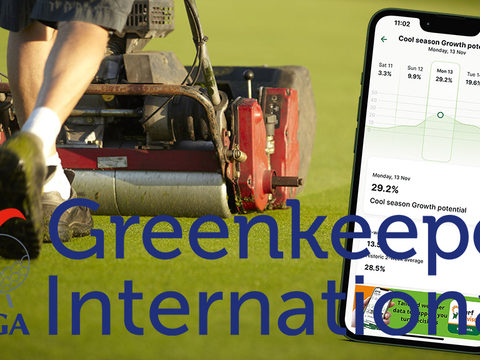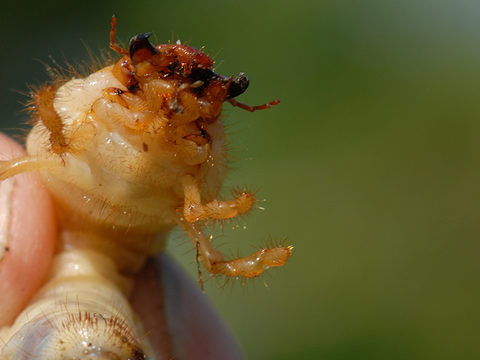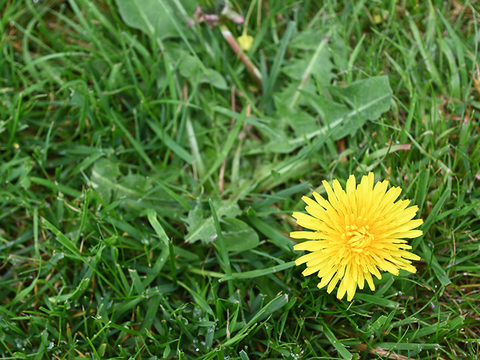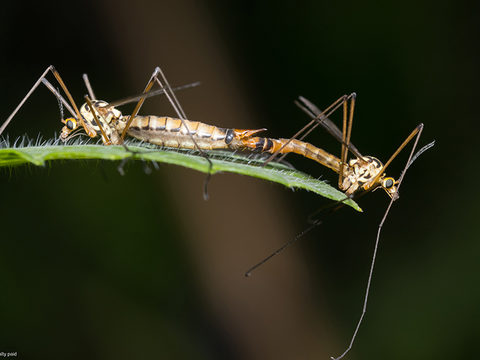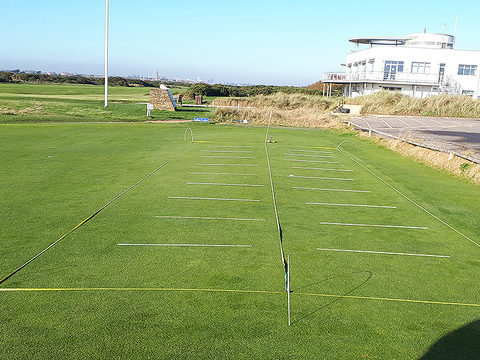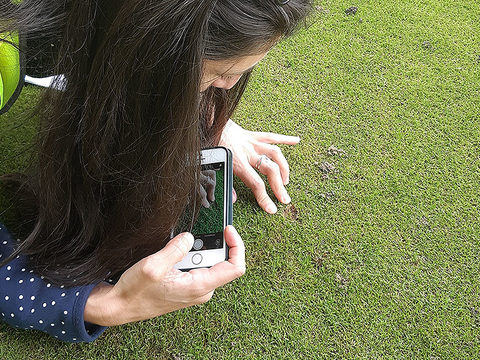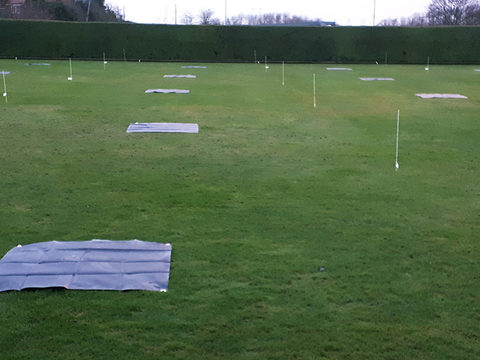Amino acids explained

During GCSE biology we all learned that amino acids are the building blocks - the Lego - of proteins, and that proteins are necessary for every level of cell function.
Now new turf research has shown how an imbalance of amino acids at key times can compromise plant function, explains Syngenta Technical Manager, Glenn Kirby (below) in the latest Greenkeeper International Turf Science InSight article.

It has also demonstrated why supplementing specific key amino acids through the season ensures plants are better placed to cope with stresses, whenever they occur.
It’s only with a better understanding of cell molecular science that research has shown how different amino acids fit together in different ways in creating specific structures.
Find out more about new Hicure - the 1st turf biostimulant from Syngenta
And just like Lego bricks used to build a model house, you can break them up and re-build something else. However, if you now want to build a car, for example, you may not have the right number, or shape, of bricks.
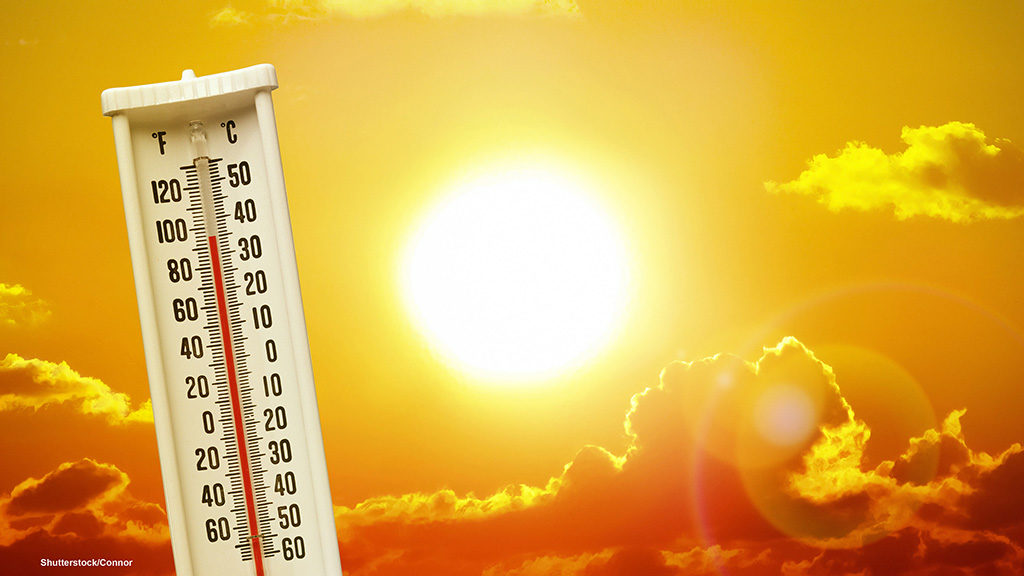
In the same way, the turf plant will use amino acids to build proteins for all its everyday functions of growth. But, if some external factor were to affect the plant, such as disease attack, exposure to suin and heat, or or drought dehydration, for example, it needs to recycle the amino acids to create different proteins best suited to repair and recover from the stress.
It’s a fascinating process that is constantly on the move, as plants adapt to ever changing environmental conditions and physical challenges.
During good growing conditions plants can readily produce the required amino acids. The challenge comes when stress hits and the plants need to quickly adapt. Where there’s a short-term deficit in the necessary amino acids as new proteins are constructed, recovery could be compromised and the plant suffer more severe effects.
Block construction
Turf research in the development of Hicure biostimulant identified that, of the 18 amino acids it supplies, four of the essential components to boost are:
- Glutamic acid – a precursor of photosynthetic activity and building block of other amino acids
- Proline – along with hydroxyl proline as a protector of membrane structure
- Alanine – with an essential role in plant hormones
- Glycine – a precursor of chlorophyll and a potent osmolyte to provide osmo-protection
Trials have shown the potential of amino acid biostimulant to maintain turf condition under stressful situations. With the increasingly common scenario of summer heat at 27⁰C by day and 21⁰C at night, for example, a Hicure 14-day programme applied for four weeks prior to stress and through the hot period, halved the level of injury caused to turf (Fig 1).
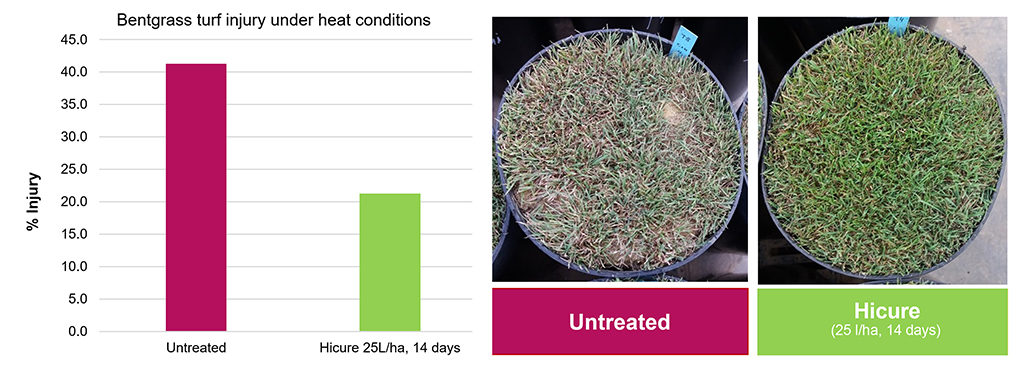
Further trials have highlighted the positive responses in turf quality and colour from supplementing selected amino acids against stresses including drought, foliar diseases and herbicide applications, for example.
Energy depravation
The issue is exacerbated since the process of breaking down and reutilising amino acids saps energy from the plant. This energy intensive process of amino acid protein turnover typically occurs at the very time when the plant is under stress effects that compromise its photosynthetic activity and chance to generate its own energy.
There is then the risk that plants start to break down more essential structures, to release more amino acids as energy to counter stress effects. That all diverts even more from the photosynthetic process.
Providing a direct source of immediately available amino acids through a Hicure biostimulant application acts to conserve the plant’s own energy lost through nitrogen assimilation and protein turnover.
Furthermore, that can act to kick-start the whole energy generation process, whereby the plant can take up and utilise organic sources of N more effectively too.
Integrating aminos
Stress is almost inevitable on turf surfaces, typically intensively managed to maintain the best possible surfaces demanded by players and clubs. Coupled with environmental stresses of an increasingly volatile climate.
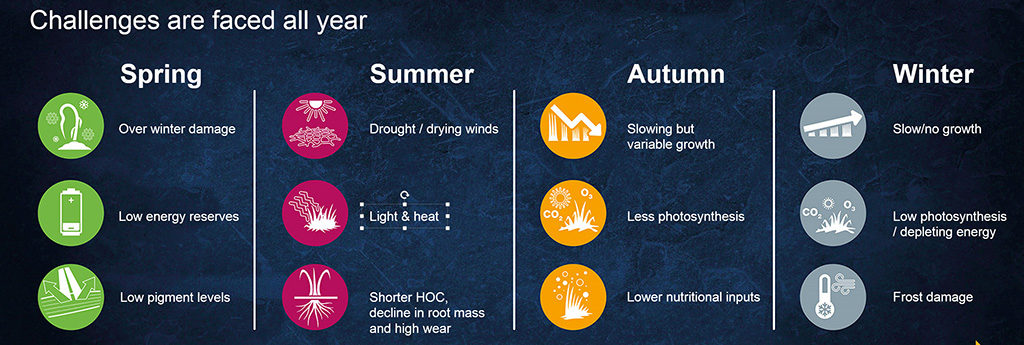
The consequences are a matter of degree, and a short or minor stress incident might go unnoticed, with little or no impact. And once the stress has been alleviated, the plant can potentially recycle amino acids back to their original function - providing any damage has not been irredeemable.
Increasingly research is focussed on utilising all the tools available to minimise effects of stress and maintain consistent plant health, developing into a bespoke ITM programme.
We have long studied the effects of inputs to mitigate the effects of stress and help plants manage without altering their molecular function and amino acid use. Ryder pigment, for example, protects the leaf from damaging UV light, which limits the need for the plant to constantly adjust. A Qualibra wetting agent can reduce the impacts of too much or too little soil moisture, again limiting the stress effect.
Research has also shown that Heritage gives a physical boost in anti-oxidants, which can demonstrate plant health enhancement over and above disease control alone. That has included greener leaves, improved photosynthetic activity and greater drought tolerance.
Now, the research into the role of amino acids in cell and protein function provides an additional tool designed to better help turf plants to cope with stress events.
The trial work has shown the benefits of pre-stress conditioning, to have the necessary amino acids and energy available to the plant at the onset of issues occurring. It’s an insurance strategy that is even more essential, and will pay-back more regularly, as periods of prolonged environmental stresses become more common.
Find out more about new Hicure - the 1st turf biostimulant from Syngenta
Read all the Greenkeeper International Turf Science InSight articles here:


